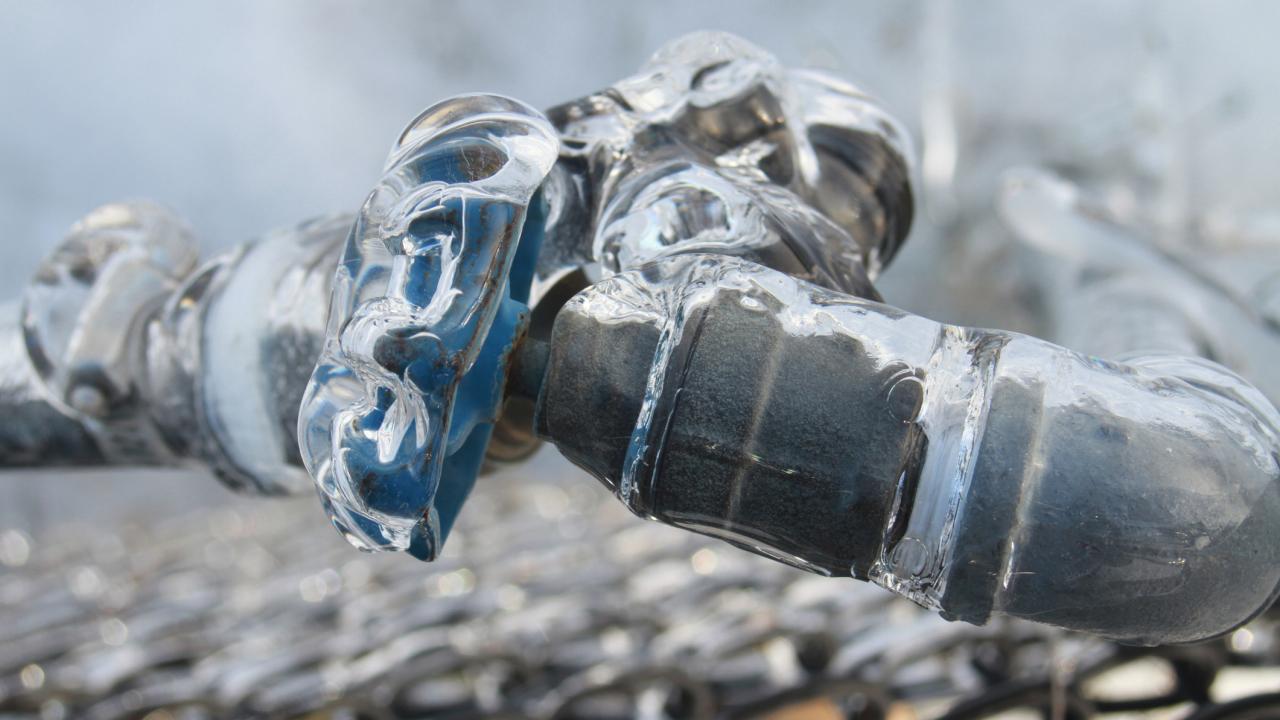They are making a few good annotation related to How to Prevent Your Pipes From Freezing overall in this post down below.

Winter can ruin your plumbing, specifically by freezing pipelines. Here's just how to avoid it from taking place and what to do if it does.
Introduction
As temperature levels decrease, the threat of frozen pipelines rises, potentially leading to expensive repairs and water damages. Understanding exactly how to stop frozen pipelines is important for homeowners in cold environments.
Recognizing Frozen Pipes
What triggers pipelines to ice up?
Pipelines ice up when revealed to temperatures below 32 ° F (0 ° C) for extended periods. As water inside the pipes freezes, it increases, taxing the pipe walls and possibly creating them to break.
Threats and damages
Icy pipelines can bring about water system interruptions, residential property damage, and pricey repair services. Burst pipelines can flood homes and create substantial architectural damage.
Indicators of Frozen Water Lines
Identifying icy pipes early can avoid them from bursting.
Exactly how to recognize icy pipes
Search for lowered water circulation from faucets, unusual odors or sounds from pipelines, and noticeable frost on revealed pipelines.
Avoidance Tips
Insulating at risk pipelines
Cover pipelines in insulation sleeves or make use of warm tape to safeguard them from freezing temperature levels. Concentrate on pipes in unheated or external locations of the home.
Heating strategies
Maintain interior areas appropriately heated, specifically locations with plumbing. Open up closet doors to enable warm air to flow around pipelines under sinks.
Safeguarding Outdoor Pipes
Garden tubes and outside faucets
Separate and drain yard hoses prior to winter. Mount frost-proof spigots or cover outdoor taps with insulated caps.
What to Do If Your Pipelines Freeze
Immediate actions to take
If you presume icy pipes, maintain taps open to soothe pressure as the ice melts. Make use of a hairdryer or towels taken in warm water to thaw pipelines gradually.
Long-Term Solutions
Architectural changes
Consider rerouting pipes away from outside walls or unheated locations. Include additional insulation to attic rooms, basements, and crawl spaces.
Updating insulation
Invest in top notch insulation for pipes, attic rooms, and wall surfaces. Proper insulation aids maintain regular temperature levels and reduces the risk of frozen pipelines.
Verdict
Stopping frozen pipelines requires proactive actions and quick feedbacks. By comprehending the reasons, indications, and safety nets, property owners can shield their plumbing during winter.
Helpful Tips to Prevent Frozen Pipes this Winter
UNDERSTANDING THE BASICS: WHY PIPES FREEZE AND WHY IT’S A PROBLEM
Water freezing inside pipes is common during the winter months, but understanding why pipes freeze, and the potential problems it can cause is crucial in preventing such incidents. This section will delve into the basics of why pipes freeze and the associated problems that may arise.
THE SCIENCE BEHIND FROZEN PIPES
When water reaches freezing temperatures, it undergoes a physical transformation and solidifies into ice. This expansion of water as it freezes is the primary reason pipes can burst. As the water inside the pipe freezes, it expands, creating immense pressure on the walls. If the pressure becomes too great, the pipe can crack or rupture, leading to leaks and water damage.
FACTORS THAT CONTRIBUTE TO PIPE FREEZING
- Low Temperatures: Extremely cold weather, especially below freezing, increases the risk of pipes freezing.
- Uninsulated or Poorly Insulated Pipes: Pipes located in unheated areas, such as basements, crawl spaces, or attics, are more prone to freezing. Insufficient insulation or lack of insulation altogether exacerbates the problem.
- Exterior Wall Exposure: Pipes running along exterior walls are susceptible to freezing as they encounter colder temperatures outside.
- Lack of Heating or Temperature Regulation: Inadequate heating or inconsistent temperature control in your home can contribute to frozen pipes.
PROBLEMS CAUSED BY FROZEN PIPES
WHY CERTAIN PIPES ARE MORE PRONE TO FREEZING
- Pipe Bursting: As mentioned earlier, the expansion of water as it freezes can cause pipes to burst, resulting in significant water damage.
- Water Damage: When pipes burst, it can lead to flooding and water damage to your property, including walls, ceilings, flooring, and personal belongings.
- Structural Damage: Prolonged exposure to water from burst pipes can compromise the structural integrity of your home, leading to costly repairs.
- Mold and Mildew Growth: Excess moisture from water damage can create a favorable environment for mold and mildew growth, posing health risks to occupants.
- Disrupted Water Supply: Frozen pipes can also result in a complete or partial loss of water supply until the issue is resolved.
https://busybusy.com/blog/helpful-tips-to-prevent-frozen-pipes-this-winter/
- Location: Pipes located in unheated or poorly insulated areas, such as basements, crawl spaces, attics, or exterior walls, are at higher risk of freezing.
- Exterior Pipes: Outdoor pipes, such as those used for irrigation or exposed plumbing, are particularly vulnerable to freezing as they are directly exposed to the elements.
- Supply Lines: Pipes that carry water from the main water supply into your home, including the main water line, are critical to protect as freezing in these lines can affect your entire plumbing system.
- Underground Pipes: Pipes buried underground, such as those connected to sprinkler systems or outdoor faucets, can be susceptible to freezing if not properly insulated.

I'm very eager about 6 Ways to Prevent Frozen Pipes and I am hoping you enjoyed reading the entire piece. Enjoyed reading our write up? Please quickly share it. Help other people discover it. We enjoy your readership.
Call Today
Comments on “Crucial Tips for Preventing Frozen Pipes in Cold Weather Seasons”